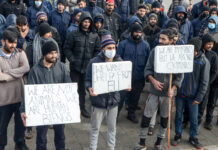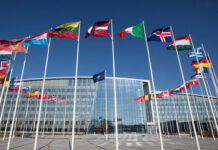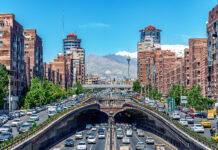Latest developments
In Syria, in the northern part of the country not controlled by the regime where US troops are still present, fighting continues on multiple fronts. The clashes with Arab and Turkmen fighters supported by Turkey mainly concern the territories controlled by the Syrian Democratic Forces (SDF) led by Kurds and supported by the US. In the summer of 2023, there were clashes in Manbij, in the eastern province of Deir ez-Zor (where the country’s main oil resources are located), and in the northeastern province of Hasaka (in Rojava). The SDF accuses Turkey, Iran, and the Syrian regime of seeking to provoke a civil war in Kurdish-controlled areas to impose their dominance. In September 2023, clashes occurred between the regular Syrian army of Assad and pro-Turkish armed factions in the area of Tal Tamr, in the northwest of the Hasakah province (mostly Kurdish).
Meanwhile, a revolt was recorded in the summer of 2023 in the Sueida province, a stronghold of the Druze minority under the control of the Syrian regime, sparked by frustration caused by the dramatic economic situation: it takes 15,500 Syrian pounds for 1 US dollar. At the beginning of the conflict, in 2014, the exchange rate was 47 pounds.
Syria is also indirectly experiencing the effects of the escalation of the Russo-Ukrainian war and the new Israeli-Palestinian conflict. The Kremlin intervened militarily in Syria in 2015 alongside Assad, changing the course of the war, and then committed financially to the reconstruction of the country. But now, due to the numerous difficulties encountered following the invasion of Ukraine, Moscow has been forced to significantly scale back its actions in Syrian territory.
For years, Israel has been carrying out airstrikes on what it considers to be Syrian positions of Hezbollah and Iranian militias operating in Syria alongside the regime. These actions have intensified since, following a heavy attack conducted in Israeli territory by Hamas on October 7, 2023, Tel Aviv launched a new war against the Gaza Strip. Since then, rocket launches from Syria attributed to Hezbollah have been recorded, while attacks have been carried out on US bases in the north of the country from areas where Iranian positions are located, prompting a response from the US Air Force. On October 12, 2023, in an Israeli raid, the airports of the capital Damascus and Aleppo, the second-largest city in the country, were hit. In the North, ISIS militants also continue their attacks.
What are they fighting for
The conflict in Syria initially began in March 2011 when the population took to the streets during the Arab Spring, demanding the fall of the Regime. This revolution quickly turned into a conflict between government forces and rebel groups financially and militarily supported by organizations of the Muslim Brotherhood abroad. As the war reached a stalemate, it took on a religious dimension.
In March/April 2014, the conflict further radicalized. While the Russians provided military support to the Regime, Iranians and Shiite militias like Hezbollah became fully involved in the war to defend Shiite holy sites and the Regime.
On the opposing side, radical Sunni groups, previously represented by Jabhat al-Nusra (affiliated with al-Qaeda), proliferated to form the so-called Islamic State (ISIS). Exhausted by the conflict, many joined the self-proclaimed Caliphate in the territories it controlled.
Meanwhile, the Kurdish minority, organized militarily in the People’s Protection Units (YPG) and Women’s Protection Units (YPJ), which some consider ideologically close to the Turkish PKK, began seizing territory in the Northeast. Here, they formed Rojava, where Syrian Kurds saw the opportunity to create an independent territory, an alternative to the autonomous Kurdistan in Iraq. This project was viewed unfavorably by Turkey, which, once ISIS was militarily defeated, entered Northwestern Syria with the goal of creating a “buffer zone” along the border between the two countries.
Country overview
Historically, Syria was a much larger territory than it is today: it coincided with the Levant, where numerous kingdoms and civilizations succeeded over time, such as the Umayyad Caliphate. First integrated into the Ottoman Empire, then briefly under French mandate, Syria gained independence in 1946. This marked the beginning of a phase of instability, mainly due to conflicts among the country’s social, religious, and political groups.
In 1967, following the Six-Day War, Israel seized most of the Golan Heights, which it annexed in 1981, despite UN Security Council Resolution 497 deeming the decision “null and void and without international legal effect.” In 1970, Hafez al-Assad came to power, establishing an authoritarian and totalitarian government in Syria controlled by the Ba’ath Party, whose main objectives included achieving internal stability and regaining the Golan Heights. After his death in 2000, power passed to his son, Bashar al-Assad, who continued along the path laid out by his father, using military and security services to suppress political dissent.
In March 2011, popular discontent erupted, and inspired by the Arab uprisings, protests against the government also began in Syria. On March 18, 2011, thousands of people took to the streets, in what would later be remembered as “the Friday of Dignity.” The army opened fire in Daraa, in the south of the country, killing two boys. This marked the beginning of the Syrian revolution. Thousands of students began flooding the streets of Syrian cities, protesting against the Assad clan. Universities and mosques across the country became the epicenter of the uprising. Believing they could quickly stop the wave of dissent, the regime resorted to violence.
The confrontation turned into armed conflict when many deserters from the regular army formed what had fought for years under the banner of the Free Syrian Army, led and funded mainly by the Muslim Brotherhood. The exhausting conflict then paved the way for Islamic extremism, first with the Nusra Front and then with the so-called Islamic State (ISIS), as well as a galaxy of other Islamist groups loyal to the self-proclaimed caliph al-Baghdadi.
In March 2023, on the occasion of the twelfth anniversary of the outbreak of the popular uprising, the Syrian Network for Human Rights (SNHR) presented a report indicating the number of deaths year by year, also specifying which party to the conflict they were attributed to (government forces, Russian army, pro-Iranian militias, Hezbollah, Free Syrian Army, ISIS, Islamist groups affiliated with al-Qaeda, Islamic Party of Turkestan, Syrian Democratic Forces, international coalition). In total, between March 2011 and March 2023, this long war has caused no fewer than 230,224 civilian casualties, including 30,007 children and 16,319 women. Most of the deaths occurred in the second and third years of the conflict.
In 2017, the United Nations High Commissioner United Nations High Commissioner for Human Rights called Syria “the worst man-made disaster since the World War II,” with 9.3million people suffering from food insecurity and 4.5million children suffering from hunger. The Syrian government of Bashar al-Assad, the army national army supported by Lebanese Hezbollah, Iranian militias and Russia currently controlling most of the country. Among the few areas left in rebel hands is that of Idlib, which is ruled by militia formations many Salafists united under the umbrella of the Hay’et Tharir al-Sham (Hts), which brings together some of the early Qaedist organizations that fought in Syria alongside the Free Syrian Army at the beginning of the revolution.
The area in the northwest of the country, starting from that of the 4 Kurdish cantons that had formed with an experiment of democratic confederalism, Rojava, on the other hand, has been affected by constant raids by Turkish armed forces and the Syrian National Army, supported and financed by Ankara, aiming to create a buffer zone along the border. Then there’s ISIS, the jihadist group that made headlines in 2014 after conquering nearly half of Syria and about a third of Iraq, which, although no longer controlling territories, carries out suicide attacks in those areas.
Key figure or organization: White Helmets in Syria
On the night between February 5th and 6th, 2023, an earthquake measuring 7.8 on the Richter scale struck the southern area of Turkey and the northern regions of Syria, causing about 60,000 deaths, over 121,000 injuries, and more than 5 million displaced people. The Syrian territories affected by the earthquake are those still partially controlled by rebel forces. In those regions, already severely tested by 12 years of conflict, inhabited by millions of displaced people from other parts of Syria and with a large number of dilapidated houses and temporary shelters, the action of the Syrian White Helmets was vital in extracting the dead and injured from the rubble. This self-organized civil defense emerged at the outbreak of the civil war at the initiative of former British military James Le Mesurier (founder of the Mayday Rescue NGO). Currently, it has over 3,000 volunteers, both men and women.
Focus 1 – Regarding the Syrian clash at the Arab League
In May 2023, President Bashar al-Assad attended his first Arab League summit in Saudi Arabia since Syria was suspended from this international political organization at the outbreak of the civil war in 2011. For his readmission, Arab states asked Assad to distance himself from Iran (his longstanding ally along with Russia) and to halt the thriving smuggling of Captagon pills. In recent years, Syria has become the world’s leading producer of these amphetamine tablets, which have flooded the Middle East up to the wealthy Gulf countries. Due to the high-level protections enjoyed by this illegal trade, the US (and others) now refer to Syria as a narco-state. In Damascus, in April 2023, the Saudi Foreign Minister promised $4 billion to Syria in exchange for curbing drug trafficking. In May 2023, during a meeting in Amman with the Foreign Ministers of Egypt, Iraq, Saudi Arabia, and Jordan, Assad assured that he would “take necessary measures to end smuggling.” A week later, in a raid in southern Syria, the Jordanian military aviation killed Merhi Al-Ramthan (along with his entire family), considered the Syrian kingpin of Captagon.
Focus 2 – The Iraqi Prime Minister Returns to Damascus
In July 2023, the new Iraqi Prime Minister, Mohammed Shia’ al-Sudani, paid a visit to Damascus to meet with Syrian President Bashar al-Assad. Since the outbreak of the Syrian civil war in 2011, there had not been a state visit by the neighboring Iraqi government. The talks focused on the security of the 600 kilometers of border between the two countries, as well as combating drug trafficking. Other topics on the agenda included the issue of drought, caused by both climate change and the construction of dams by Turkey, as well as the possibility of reopening an oil pipeline for export to the Mediterranean, which could help Iraq diversify its export routes.


















